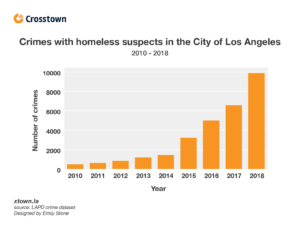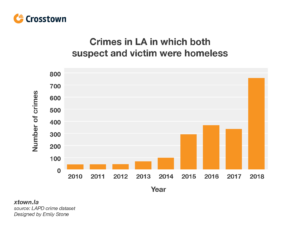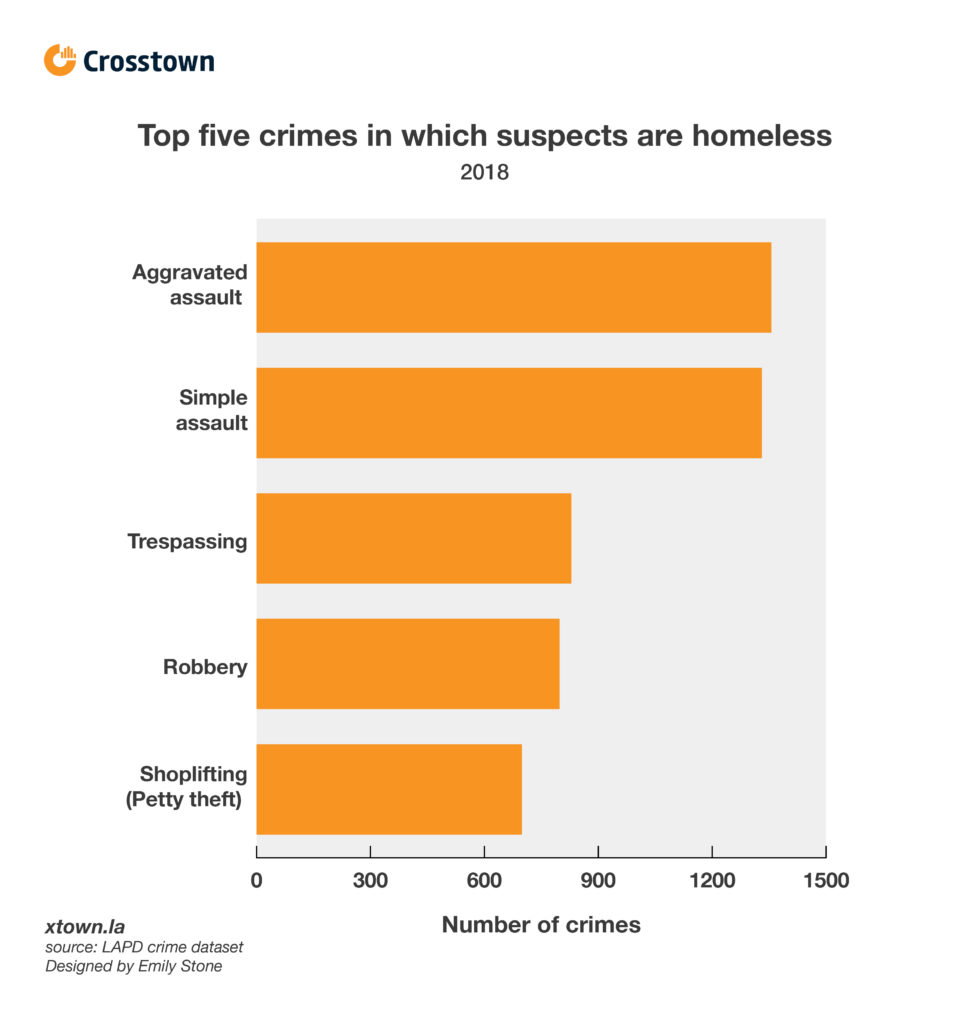Rise in homelessness accompanied by spike in related crimes
The City of Los Angeles saw an alarming 16% increase of its homeless population from last year, according to the results of the 2019 Greater Los Angeles Homeless Count. The rise in homeless-related crimes, however, is just as substantial.
There were 15,131 crimes where either the victim or suspect was homeless in 2018, a whopping 57% increase from the year before. That was also the highest number of crimes involving someone who was experiencing homelessness since 2010, the year the LAPD first began making its crime data publicly available.
Last year, there were 4,569 crimes reported against people who were experiencing homelessness, a 65% increase from the year before.

There were 9,805 crimes reported with homeless people as suspects, a 50% increase from the year before. The most frequent crimes committed by suspects who were homeless included aggravated and simple assaults, and robbery. 39% of these crimes were violent crimes.

This data only includes crimes that were reported to the police. The actual number of crimes related to the homeless population was likely much larger, as many people experiencing homelessness are marginalized and often do not possess the resources to rely on the police for protection.

However, as homelessness has swelled in Los Angeles over the past decade, activists have noted that the city agency that most frequently comes into contact with homeless individuals is the LAPD. These activists accuse the city of “making homelessness a crime,” as people living on the street are frequently in violation of multiple city ordinances. That makes it easy and common for police to arrest people experiencing homelessness for a crime or disturbance or cite them for a municipal code infraction.

This has strained the relationship between the police and the city’s homeless population, as officers are often called on to remove people from encampments on sidewalks.
How we did it: We examined publicly available LAPD data on reported crimes. For neighborhood boundaries, we rely on the borders defined by the Los Angeles Times. Learn more about our data here.
LAPD data only reflects crimes that are reported to the department, not how many crimes actually occurred. In making our calculations, we rely on the data the LAPD makes publicly available. The LAPD does periodically update past crime reports with new information, which sometimes leads them to recategorize past reports. Those revised reports do not always automatically become part of the public database. We try to update our reporting when new data become available.
Want to know how your neighborhood fares? Or simply just interested in our data? Email us at askus@xtown.la.






